At the wheel: Antony Ingram
Owned since: July 2017
Current condition: Scruffy but mechanically sound
Hands-on or hands-off? Happy to fiddle, but leave big jobs to the pros
Antony Ingram is Assistant Editor at Hagerty. He has a soft spot for French and Japanese cars, but despite this has absolutely no intention of buying a Renault Kadjar, which fails to combine the best elements of either nation.

14 September 2021: The story so far
There were many reasons for acquiring a Peugeot 106 Rallye back in the summer of 2017, but a lack of willpower to ignore a car that was only 15 minutes from my office at the time must be fairly high up the list.
Had the car been 200 miles away, I’d likely not have bothered. I wasn’t really looking for a 106 Rallye, but office conversation around small, sporty Peugeots, and YouTube videos on a similar theme were a hell of a drug, and predictably after a short eBay search a car turned up not five miles away.
You know how the rest of the story goes: The price was in the right ballpark, the advert was well-written, and the seller said all the right things. After a short test drive I rustled up the cash and found myself the owner of a white 1990s supermini with white steel wheels and a fruity 1.6-litre four under the bonnet.
If you know your Peugeots, you’ll know this particular 106 Rallye is a Series 2. The original 106 Rallye debuted in 1994, a homologation special designed, like its 205 Rallye predecessor, to slot neatly into the 1.3-litre classes of Group A and Group N rallying.
The Series 2 arrived in 1997 following the 106’s facelift, but now used a 1.6-litre, eight-valve four-cylinder, offering similar outright power – 103bhp, to the 1.3’s 100bhp on the dot – but promising less work for the driver, thanks to a 97lb ft output at 3500rpm, rather than 80lb ft at 5400rpm. Styling was softer, interior carpets were blue rather than red, and the Rallye graphics changed to a three-colour flash rather than a four-colour stripe.
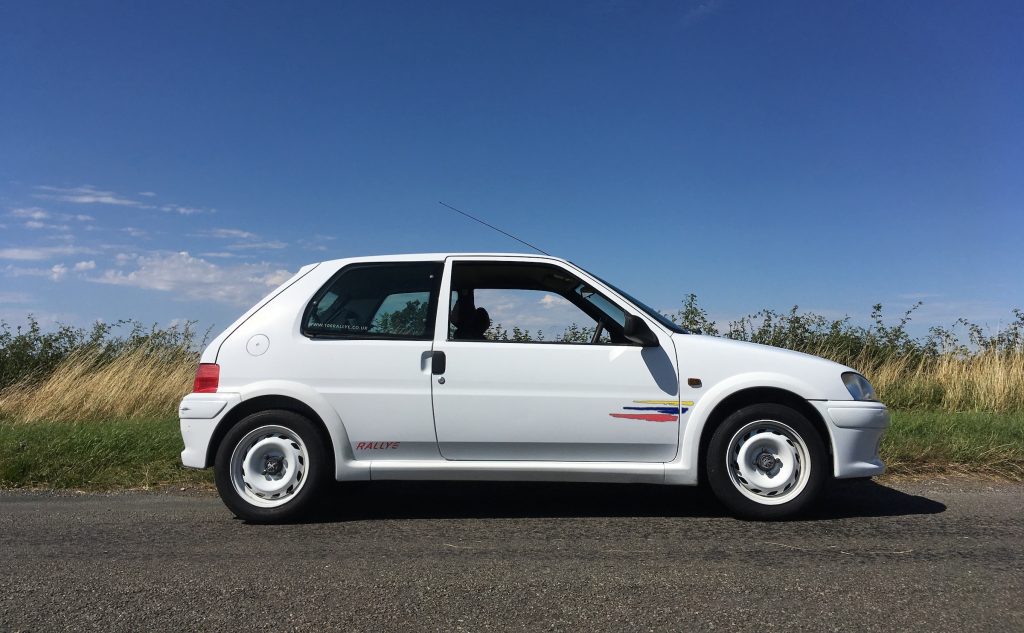
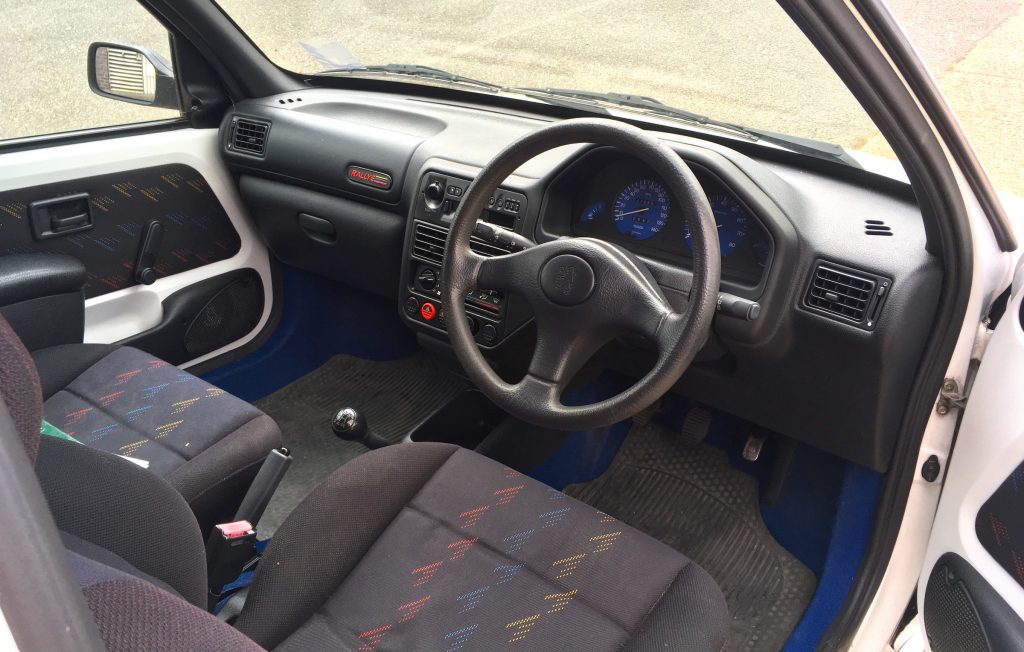
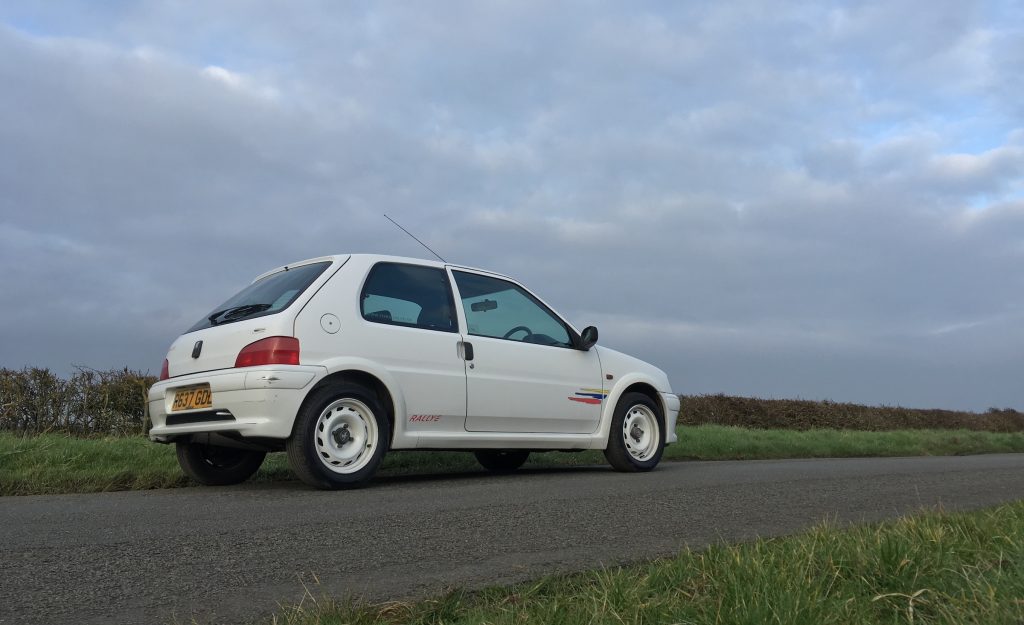
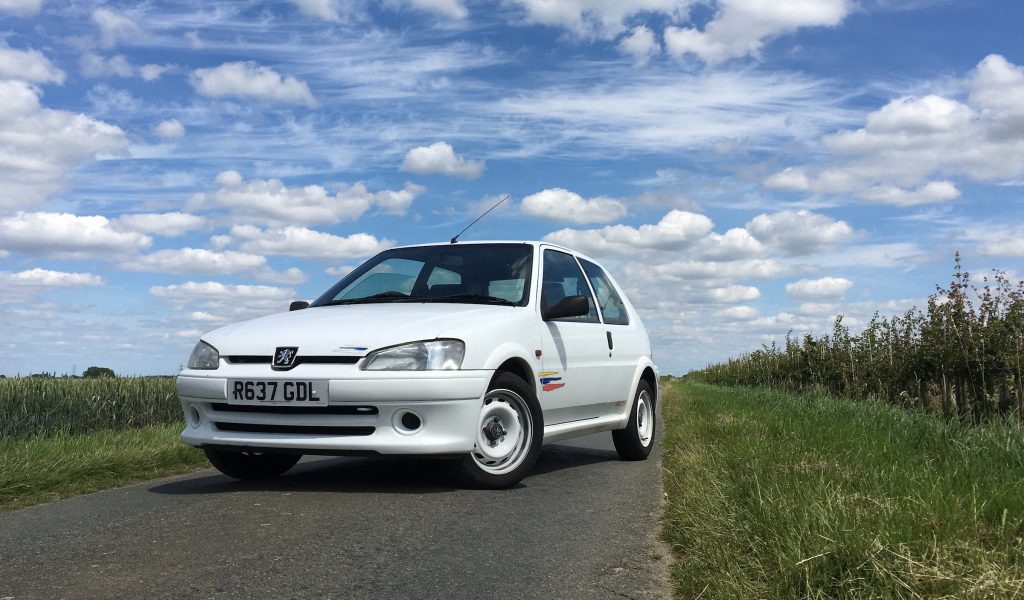
I’ve not always made wise automotive decisions, but four years down the line the Peugeot has proven one of my better buys. In truth, for the first three of those years I didn’t make the most of it, covering only around 3000 miles, but in a spell between 2020 lockdowns it became my daily driver for a time and quickly racked up another couple of thousand more. It’s since done another few thousand, amassing just over 7000 miles in my hands.
It’s been a great advertisement for getting out and using your classic cars. It’s all too tempting to treat them with kid gloves, but certainly with a car from the ‘90s like the Rallye, Peugeot designed it to be used day-in, day-out like anything else. The other day, it ticked over 118,000 miles; not huge for a car now 23 years old, but at just over 5000 miles per year, still well within the capabilities of a relatively modern design.
More importantly though, it’s simply been great fun. The idea has crossed my mind several times of letting the Rallye go, but every time I hop back in the idea dissipates like petrol spilled on a forecourt.
With responsive, tactile controls, fantastic agility owing to its low weight (889kg with a full tank, last time it was on the scales) and robust mechanicals, it’s become a barometer for every other car I drive, old or new, an important reference point for the qualities that determine a driver’s car.
Is it perfect? No, and I don’t think it should be; the last thing I want is to put myself off using it as Peugeot Sport intended. It does however still need attention in a few areas, most notably its faded, matte paintwork, and crusty and deteriorated graphics. You’ll be able to read more about that in my next report…
21 December 2021: Sparklye Rallye
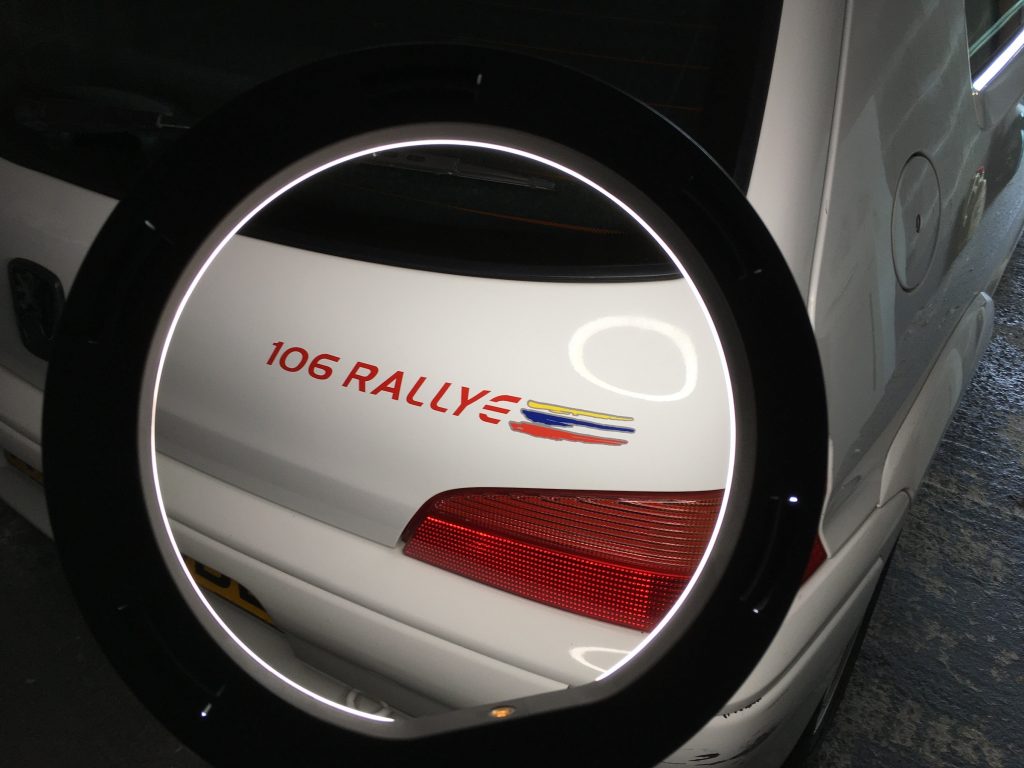
Some of you can probably relate to this, but I find it all too easy to put off doing certain things until certain other (usually insignificant and/or simply-achieved) criteria have been met. There’s probably an element of procrastination to it, but it also stems from a desire to have one’s existing ducks in a row before you add any more ducks.
I’m not sure if that analogy works, but just humour me for a second as there’s an illustrative example coming up.
I’ve not yet been on any big road trips in the Rallye, for instance, because it’s always looked a bit scruffy and, being someone who likes to take photographic evidence of things like road trips, I didn’t want to come back with a camera full of beautiful locations and a rather less beautiful car.
The solution to this, of course, would just be to tidy up the damn thing and affix the decals my brother bought me as a present too many years ago to remember, but life sometimes gets in the way, and I’ve just never really got around to it. As a result, I keep putting off that big road trip.
No longer, as back in September, I finally met up with a mechanically-handy friend, Matt, to give the Rallye the spit and polish it’s deserved for all too long. And yes, I realise how apt it is that it’s taken me three more months to write about it, but that’s just website scheduling rather than procrastination this time around.
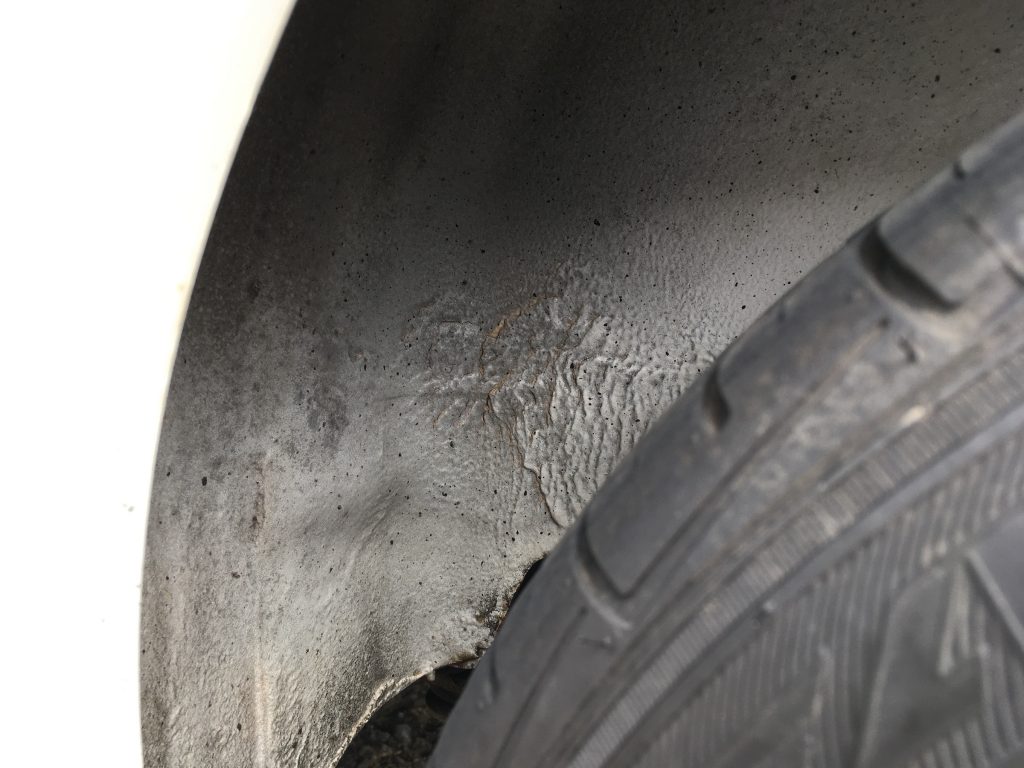
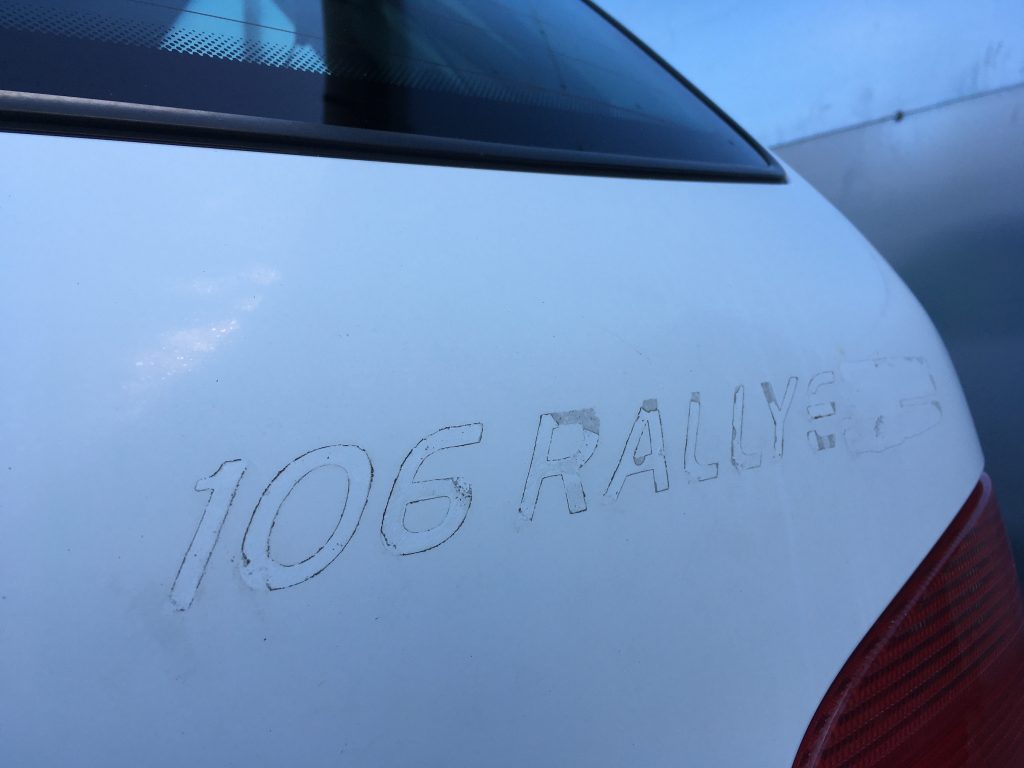
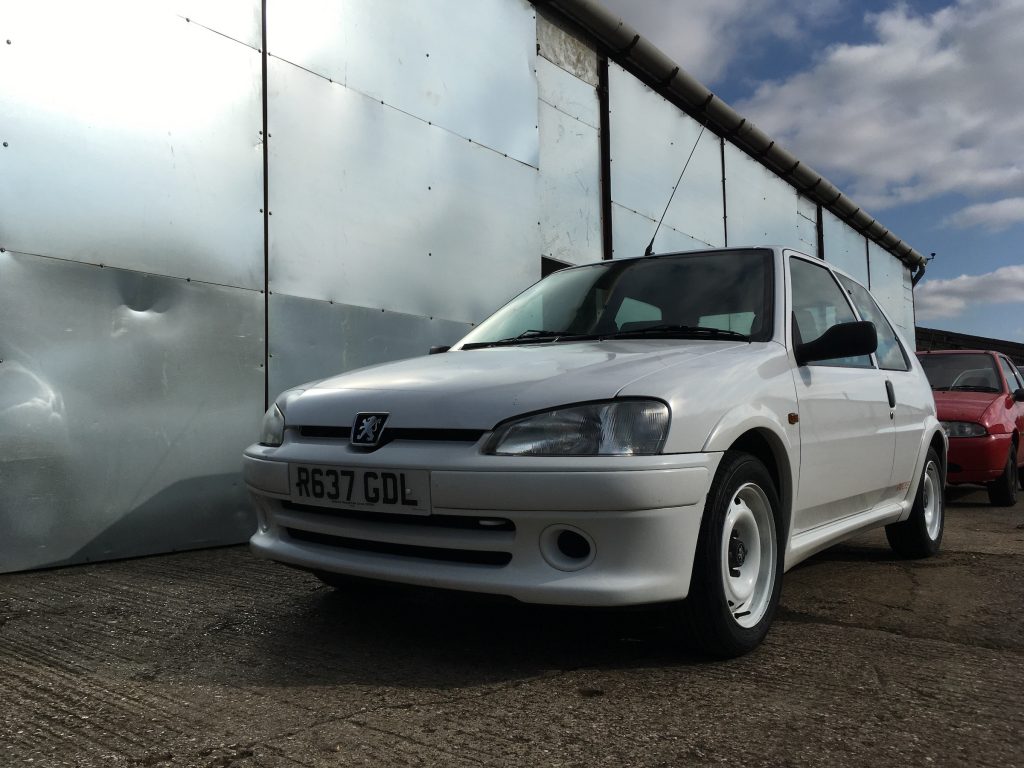
The process can be broken down into the cleaning, the polishing, and then the application of brand new and unfaded decals in the place of the originals.
The cleaning was straightforward enough, a good two-bucket wash and a blast with a pressure washer sorting most of it. I’ve kept the car relatively clean during ownership but never gone into too much depth, so one of the biggest highlights of this stage was seeing near-pristine white under the arches after layers of road grime had been blasted away.
Polishing was a several-stage process. My job – and this is largely because it involved pointing a blowtorch at the car and Matt wisely decreed that kind of thing should be the owner’s mistake to make – was to remove the old decals. I’ll not overdramatise it, since it was quite straightforward once I’d found the right technique. And I only slightly melted one of the wheel arch extensions.
While I was setting fire to stuff, Matt was going over every inch of the car with a clay bar. This on its own made a difference as profound as the cleaning had done – I wondered whether it was even worth polishing the car afterwards, so smooth was the paintwork. But polish he did, and as darkness rolled in, the whole lot was given a coat of wax for good measure.
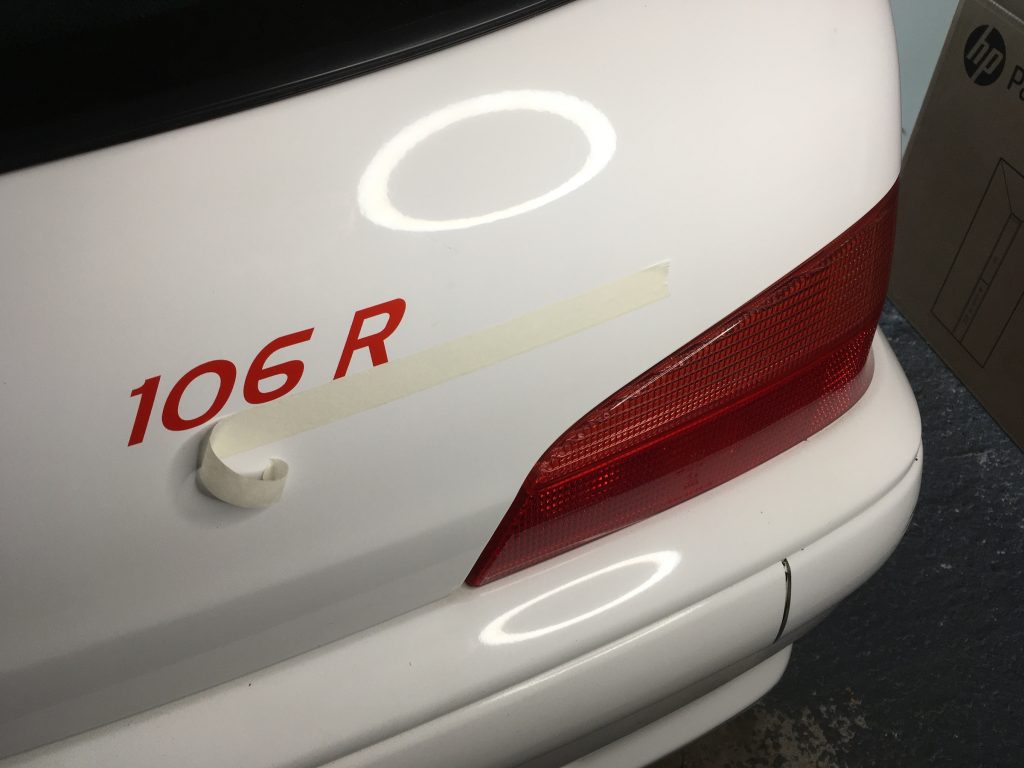
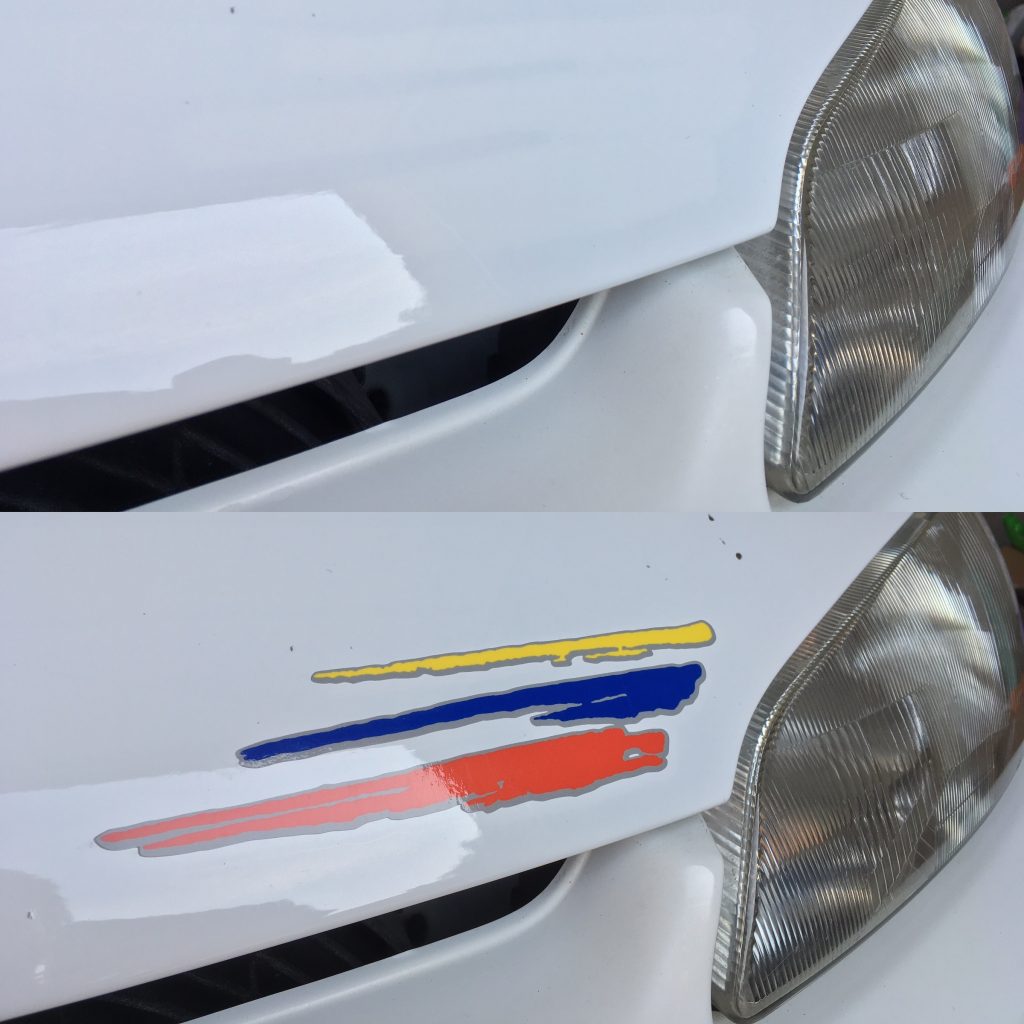
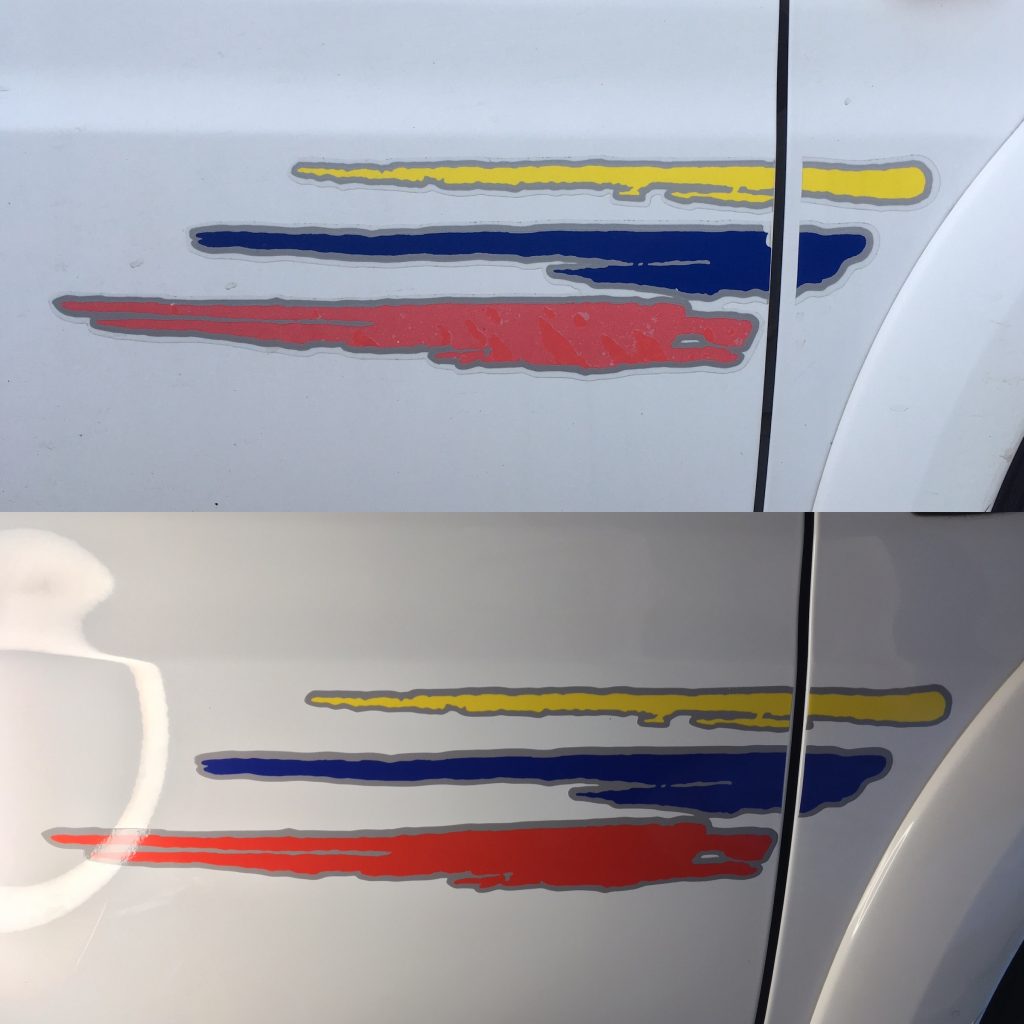
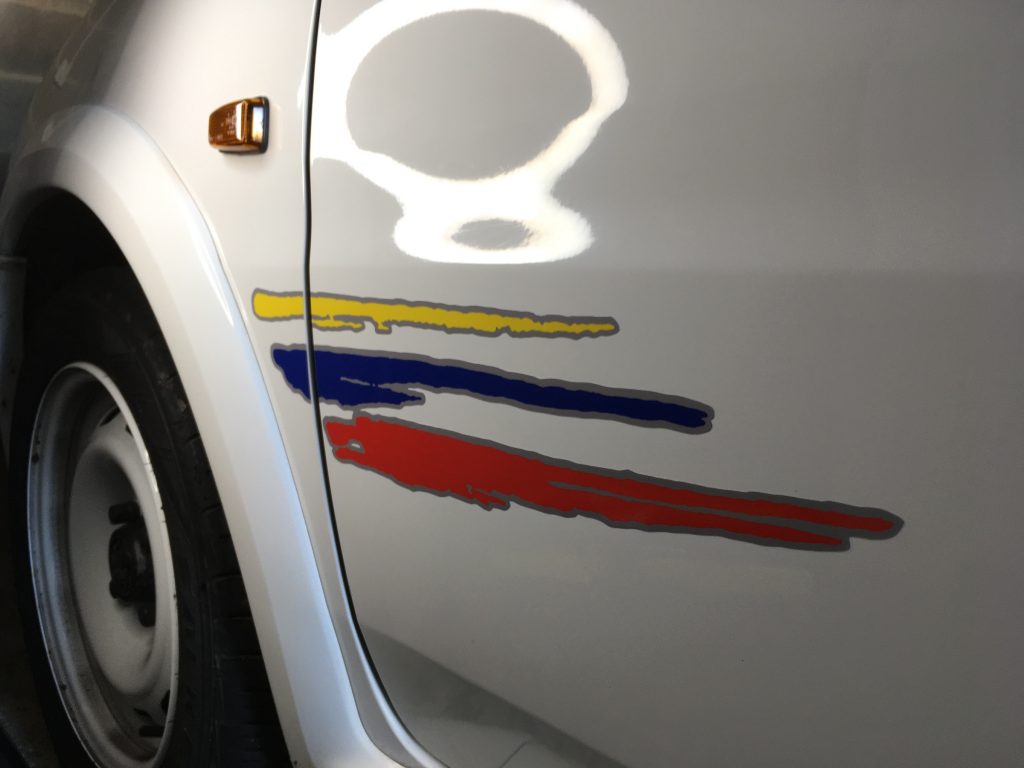
The final stage came a few days later, and was perhaps most nerve-wracking of all. Applying decals is a perfect example of the “measure twice, cut once” principle, only you need to measure from multiple angles and replace “cut” with “stick”, since you can only peel and adjust the vinyl decals so many times before they stretch and begin to look misshapen.
Things were not made easier by the vinyl backing failing to adhere to the decals themselves. This plastic sheet effectively allows you to put say, individual lettering on the car all at once, and when it doesn’t work, you must apply each and every letter and decal individually. Straight, if possible.
As you can see from the images, it turned out well. According to the timestamps on my photos, the whole process took around four hours over two days, but in concert with the polished paintwork it’s perked up the Pug no end.
Most satisfying of all is that my DIY sticker job is better than Peugeot did at the factory. Just check out the cut lines on those Peugeot Sport flashes along the doors, which were somewhat haphazard before and now look spot-on. Anyway, with the car now polished and stickered up – as well enjoying a recent service and MOT – I’ve no excuse not to get out on that long alpine road trip once the weather improves. What’s that, you say? Omicron variant? Oh for f…
12 April 2022: Rallye revival
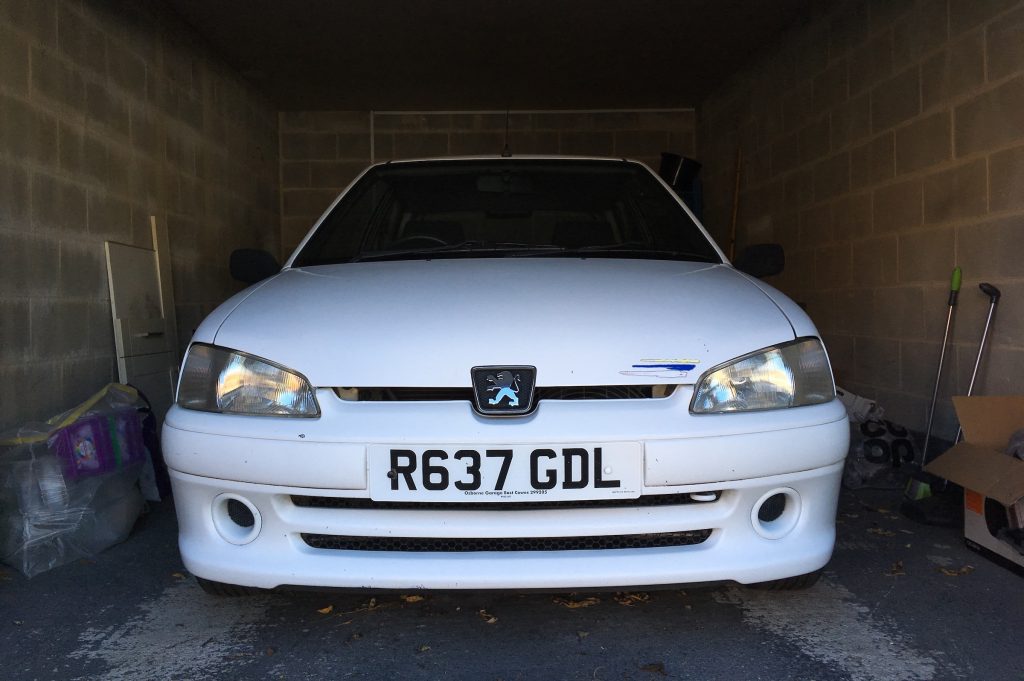
The frustration of lacking the space to store both the Rallye and my RX-7 at my home is neatly offset by the joy of that day where I get to pick one or the other up again after a few months of absence.
It’s always slightly nervewracking, that first startup and drive after a few months of storage. I try and put them away in good condition, the battery is always left disconnected, and I try to go at most three months without using one or the other, as longer periods can cause problems.
But cars are still at their healthiest used regularly, and you’ll know as well as I do that it’s not beyond inanimate, metal objects to misbehave out of spite.
So in early March I set aside a warm, dry lunchtime to recover the Peugeot having stashed it away in December. Pop the bonnet, screw the negative lead back onto the terminal, get in, twist the key and…
…and it started of course. Saying “it always does” will probably jinx things, but it’s always amazed me how much less huffy the Peugeot is upon its revival than the Mazda MX-5 I used to own.
The Mazda used to feel like a bag of bolts: tappets clicking away, all the controls feeling obstructive and resistant, and the dampers and bushes refusing to do their jobs properly until a bit of warmth had permeated through them.
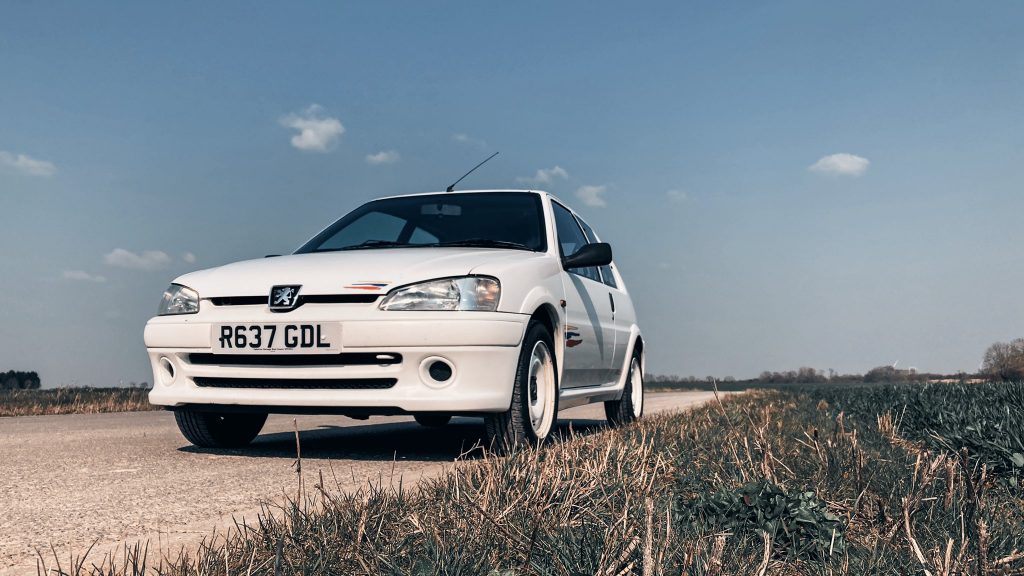
In contrast the Peugeot feels like you’d left it parked up yesterday. Perhaps its simplicity is a virtue here, with no power steering fluid to pump around, a cable-operated rather than hydraulic clutch, and simply torsion beams at the back rather than a complex arrangement of wishbones. A hammer doesn’t care if it gathers dust, right?
In fact, the only sign it’s ever been laid up is that for the first few journeys, the revs will hunt around a little when the engine is cold. Sometimes it’ll idle lower than expected as it warms up, other times you’ll be waiting at a junction and the revs will inexplicably climb to 2000rpm. A friend suspects a slightly sticky throttle mechanism (it would explain why after regular use, the problem just disappears on its own) so that’s something to investigate.
But every time I get behind the wheel, I remember why I bought this car. As I close in on five years of ownership, I think it might be the best car I’ve ever owned – brilliant to drive, simple to look after, and as one person who came to chat with me at a Japanese car show the other week confirmed, a conversation-starter too.
And as you read this, the Rallye will embark on its first proper road trip too, on a visit to its homeland. You’ll be able to read about that next time…
24 May 2022: Taking the Rallye back home
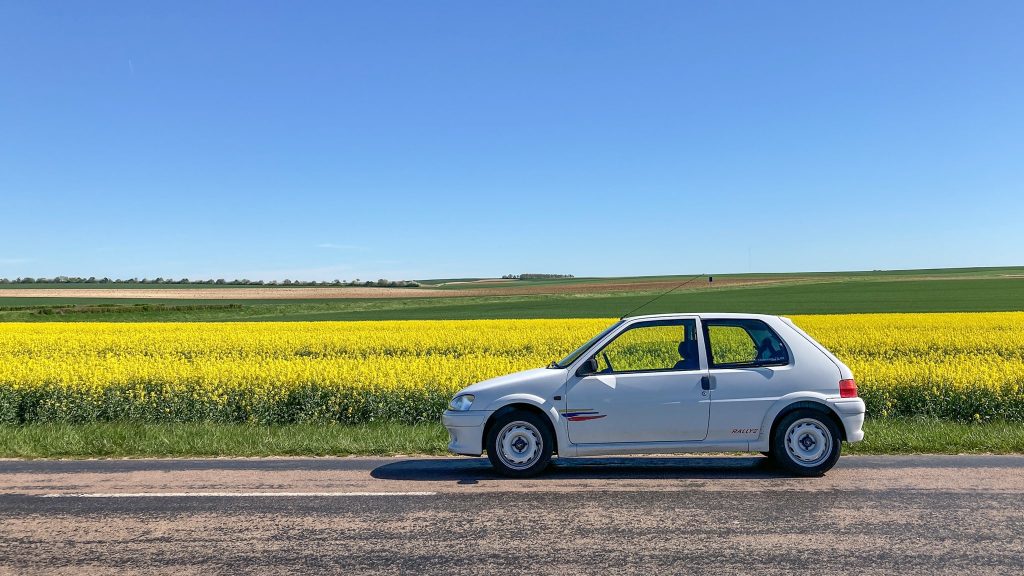
I feel like I’ve figured out the Rallye now. A joy of long-term ownership is really getting under the skin of a vehicle, and over the last few years I’ve unpeeled more and more of its layers.
It started, oddly, during one of the troughs between the various Covid peaks. I’d recently lost my job and gone freelance, and with no shiny press car to use every day the Peugeot became my daily driver. Having taken three years to do around 3000 miles, I then piled another 2500 miles onto it in the space of maybe four or five months.
This April, it did the same again in the space of nine days on a long-awaited trip to France. Well, technically 2400 miles, but who’s counting really? The point is in little over a week I covered not far short of a quarter of the miles I’ve ever done in this car, and not only did it not miss a beat, it was bloody good fun too.
I’d say I’m amazed, but really I was expecting it. I was expecting it to be reliable, because it’s a simple and straightforward car from the 1990s, one I look after, and one whose maintenance and repairs I entrust to specialists. The oil was still golden at every check, and the coolant needle barely moved even with hard acceleration up the steepest inclines.
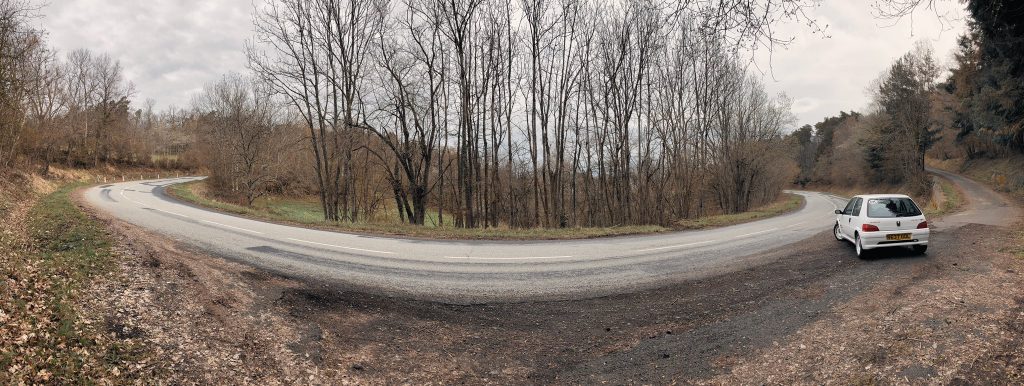
I was expecting it to be fairly liveable, and it delivered there too. Seats that have proven time and time again to be comfortable on 100-odd mile trips in the UK were fine for five, six and seven hours at a time (albeit with regular breaks for fuel, food and photos).
It was even practical, fitting a pair of Lotus Elise seats, for my friend Oliver’s project car, entirely within the boot with the rear seats in place, and still with space for my luggage. Ride comfort was more than adequate, despite the 106 Rallye being on the firmer side as old Peugeots go, and engine noise was far from unbearable.
Some of that was down to my route planning, which almost entirely avoided 4000rpm autoroute cruising and as you might have read elsewhere, simply made the trip more fun. It also made it cheaper, avoiding a few hundred quid in tolls and enabling fuel economy in the low-40mpg range.
There were only a few small downsides in all. One I knew about before the trip even started: the 12v cigarette lighter socket doesn’t work, so I couldn’t charge my phone on the go. Given my two backups turned out to be a bit flaky (my newly-bought booster charger was too new to hold a proper charge, and I err… forgot to bring my paper map) this did lead to some tense moments with navigation, and required a friendly café’s electricity at one lunch stop.
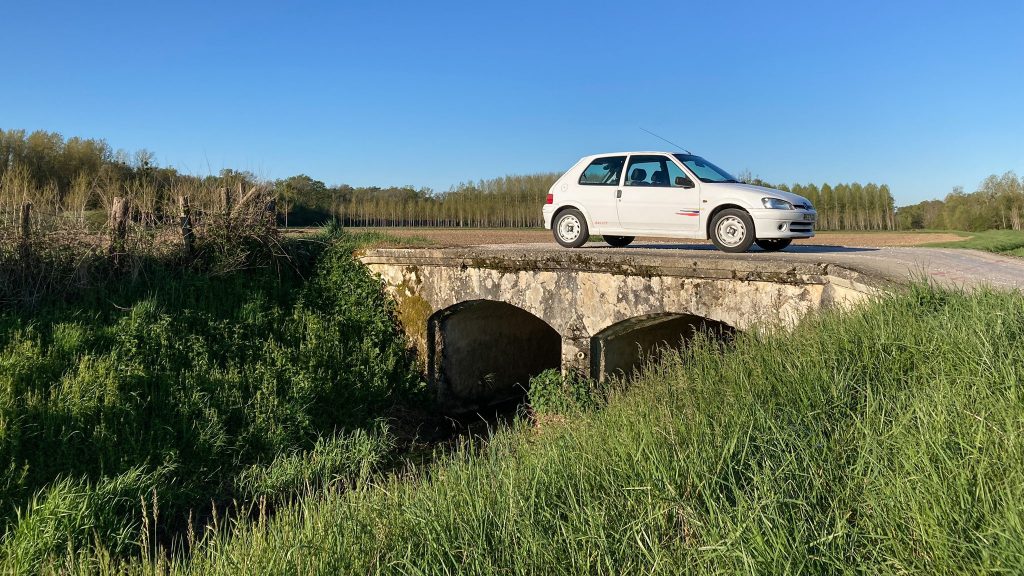
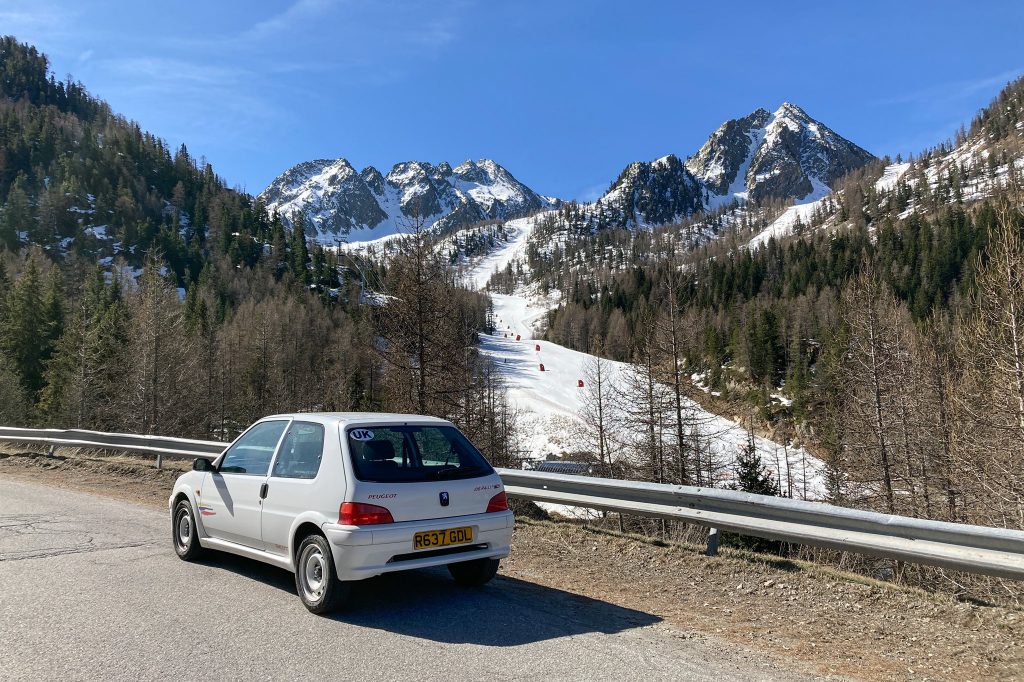
The others occurred at the same place and the same time: parked high in the Alps one morning, the passenger door wouldn’t close after I’d opened it (the latch was sticking, it seems), and there was a pool of water on the driver’s-side rubber mat, perhaps heavy condensation from the heater matrix. The former I fixed by pressing the door firmly into its striker and then locking it, which did the job, and with the latter I dried out the mat and the problem never returned.
But the real highlight was how well the car drove. Again, not a huge surprise given it’s fun even on the shortest British B-road wiggles, but on some of southern France’s best stretches it was truly energising, particularly after a couple of years cooped up, unable to travel and truly enjoy cars.
We all know driving cars is good for them, but I swear the car itself felt more alive too with every passing mile. It’s almost like the car had greater bandwidth after a good stretch – throttle response got smoother (the idle hunting mentioned last time disappeared entirely), and I’m certain the steering became more garrulous – maybe it has bedded in after a rack rebuild a few years back, or maybe the tyres have found a second wind after some hard use.
The brakes did begin grumbling, though I never experienced any fade. I’ll replace them, and maybe even upgrade them soon, as much to improve pedal feel as any wear and tear – the slightly spongy resistance has always been the car’s dynamic weak point. But after nine days on the road, I’d have done it all again if given the opportunity. And I’m sure the Peugeot would have soaked up another 2400 miles without complaint, too.
6 September 2022: Uphill, but not a struggle
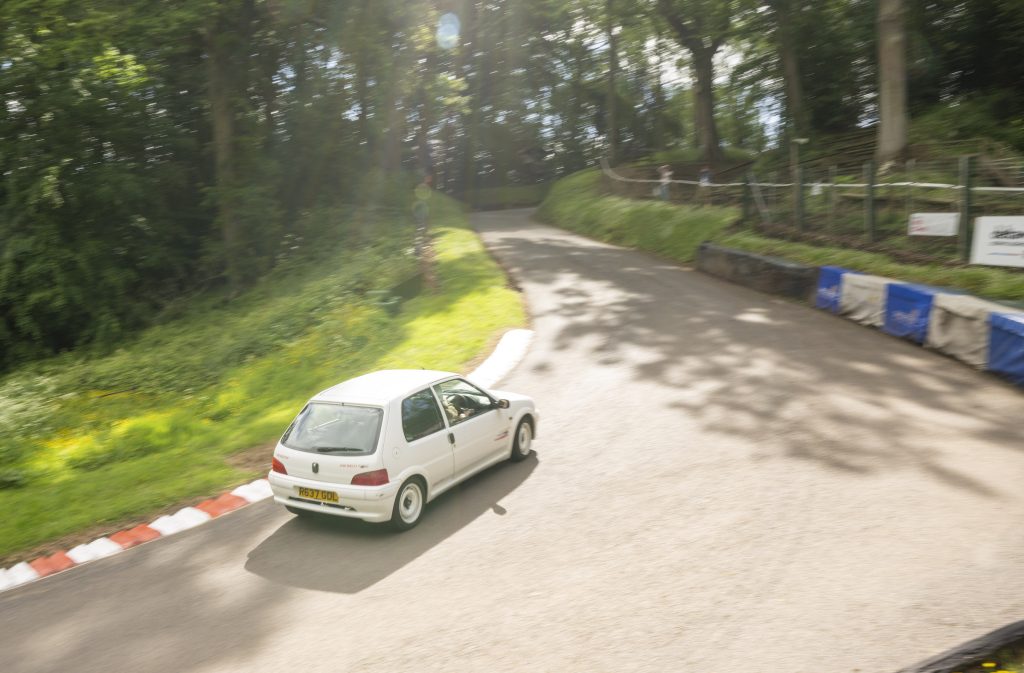
On the back of your ticket to any racing event is the message “Warning: Motorsport can be dangerous”. What it doesn’t say beneath that message, but probably should, is another potential peril. “Warning” the second note should read. “Motorsport can be addictive”.
My four runs up Shelsley Walsh at the Hagerty Hillclimb back in May (I know, I know, it’s been a while) totalled less than 2.5 miles of driving or, if you like, a thousandth of the distance I covered on the French road trip back in April.
But if that trip was the best thing I’ve ever done with the Rallye, thrashing it up the hill ranks a close second, making up in competitive spirit what it lacks in distance.
Years ago when I bought the car it became a kind of unwritten rule that I’d not use it for track days, or competition, or similar. It was first and foremost a road car, and I didn’t want to skid down the slippery slope of optimising the car in a way that might detract from its back-road performance.
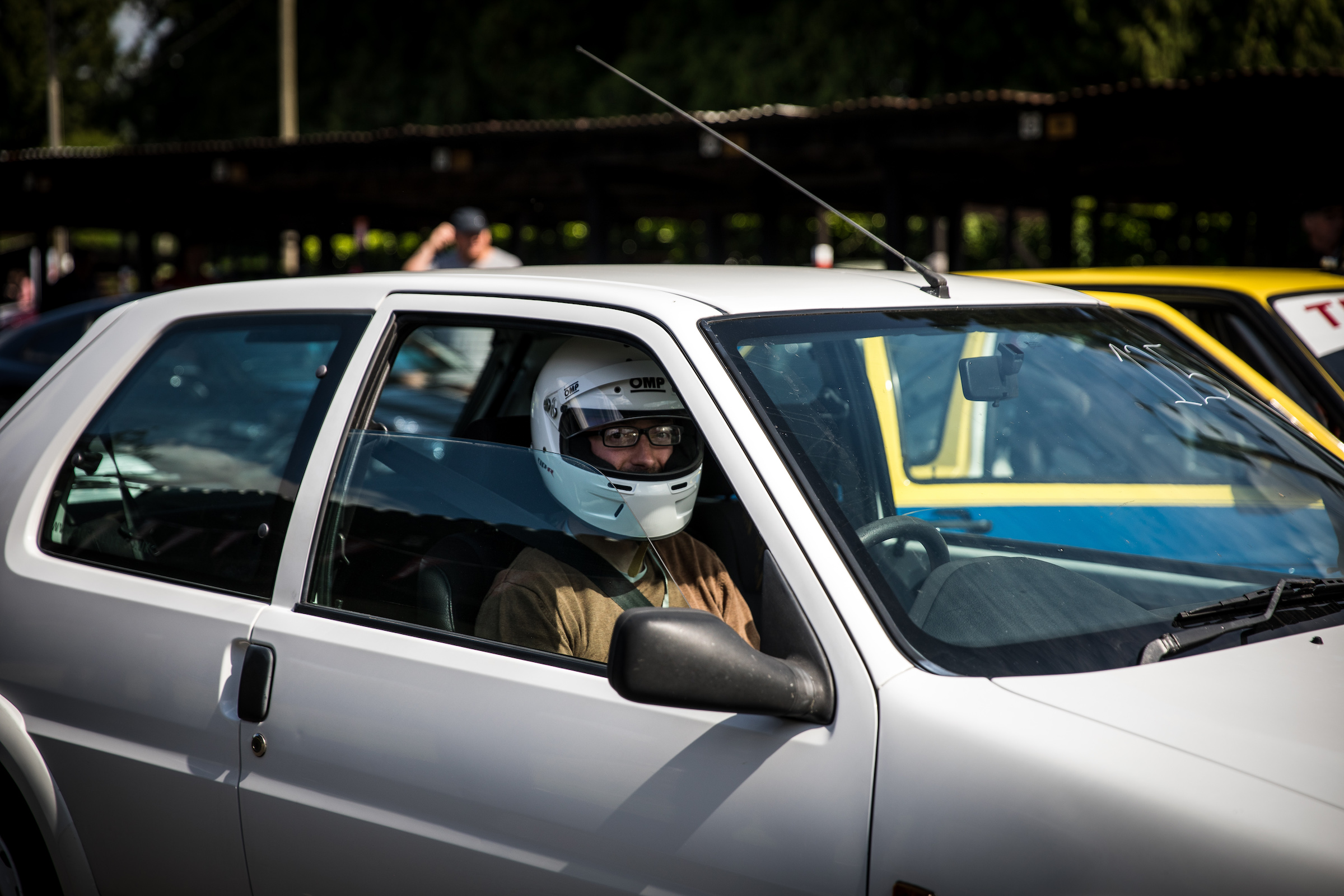
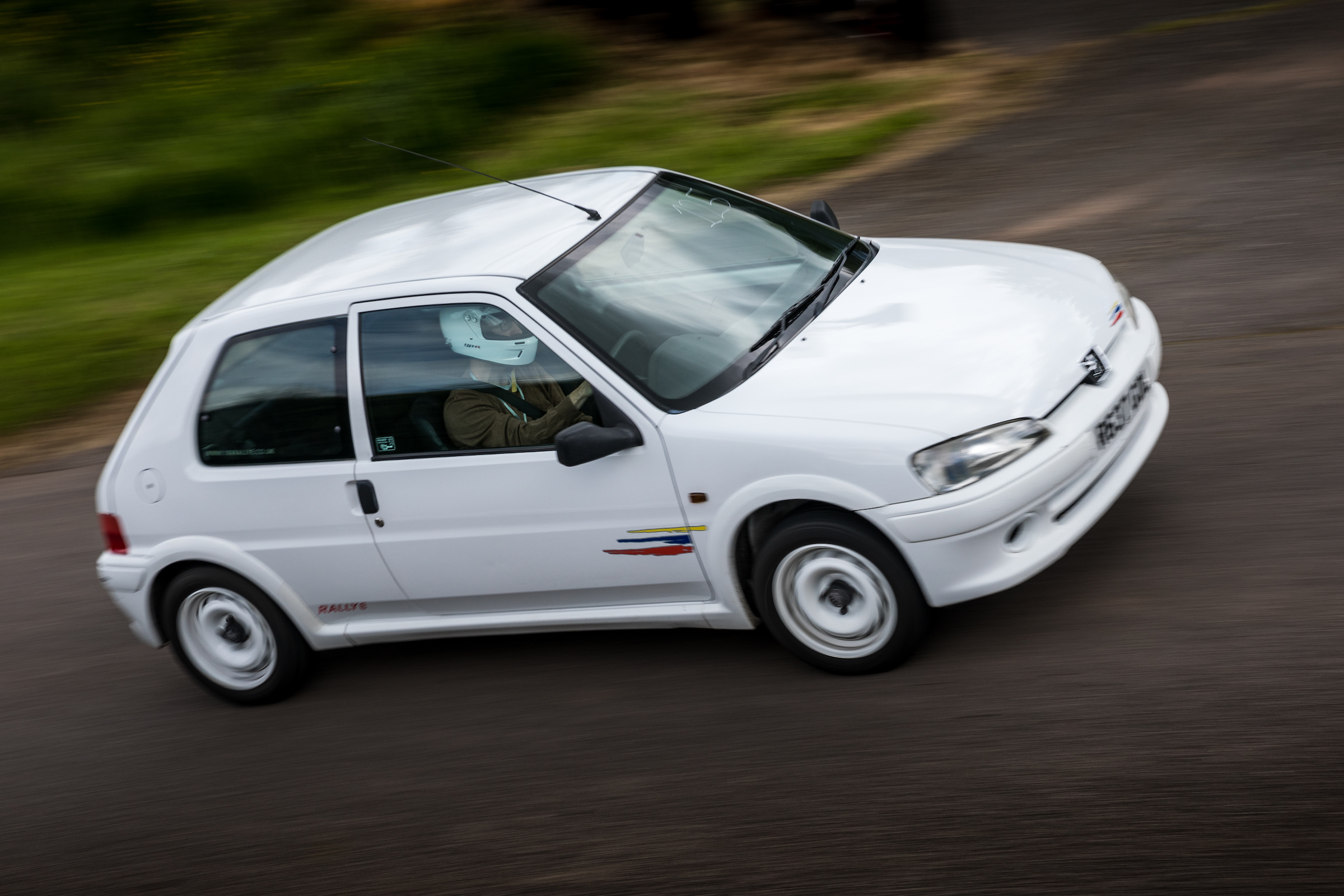
The thing is, I’m quickly realising I don’t really need to mess around with it. The Pug demonstrated its stamina in France, and at Shelsley there wasn’t a great deal (in fact, as I’m typing this, I can’t immediately think of a single thing) that I’d change about it to improve the experience.
Many eyes were on the dualling Volkswagen pair of Paul Cowland and Drew Pritchard at Shelsley, but after a couple of runs I noticed that I really wasn’t far away from Paul on the timesheets, making him and his race-prepped Mk2 Golf an unofficial target.
And at the end of the day, I was just three tenths shy. Paul’s racing driver excuse was that he mis-shifted when his gearknob came adrift, but I reckon mine are much more convincing: Paul’s Golf is a race car on sticky tyres and makes a great deal more power, whereas my Peugeot is a French shopping car on 175-section rubber and some colourful graphics down the side.
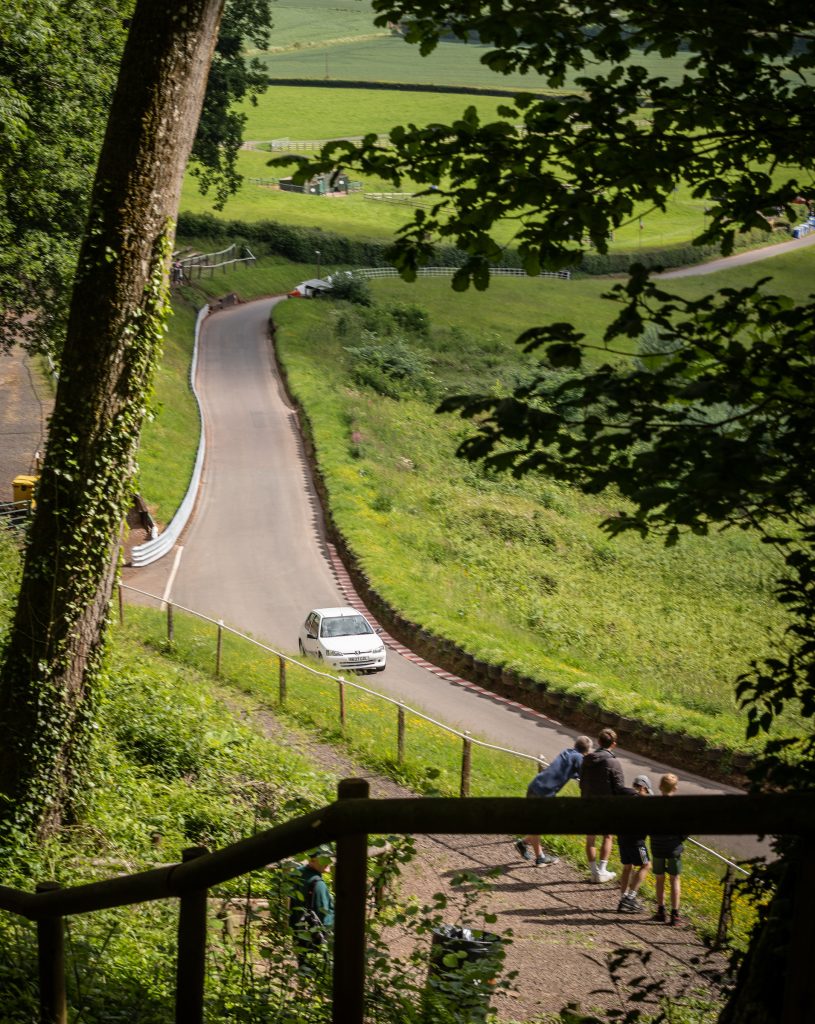
Okay, that might be doing Peugeot Sport’s 1990s engineers a disservice, as the Rallye clearly has an edge over a regular 106 and could more than hold its own with contemporary competition. But it’s still just a small hatchback at heart and dealt as happily with the drive to and from Shelsley as it did scrabbling up the hill.
Either way, it’s punching above its weight, and I love that in a car. Even up an average 11 percent grade it felt quick enough – even if it didn’t look that brisk on video – and made light work of the tricky bottom and top ‘S’ bends before the finish straight.
If nothing else, the experience has convinced me I need to enter a few more events in this car. Humble hatchback it may be, but that those Rallye stickers aren’t there without merit.
11 April 2023: Fuelling around
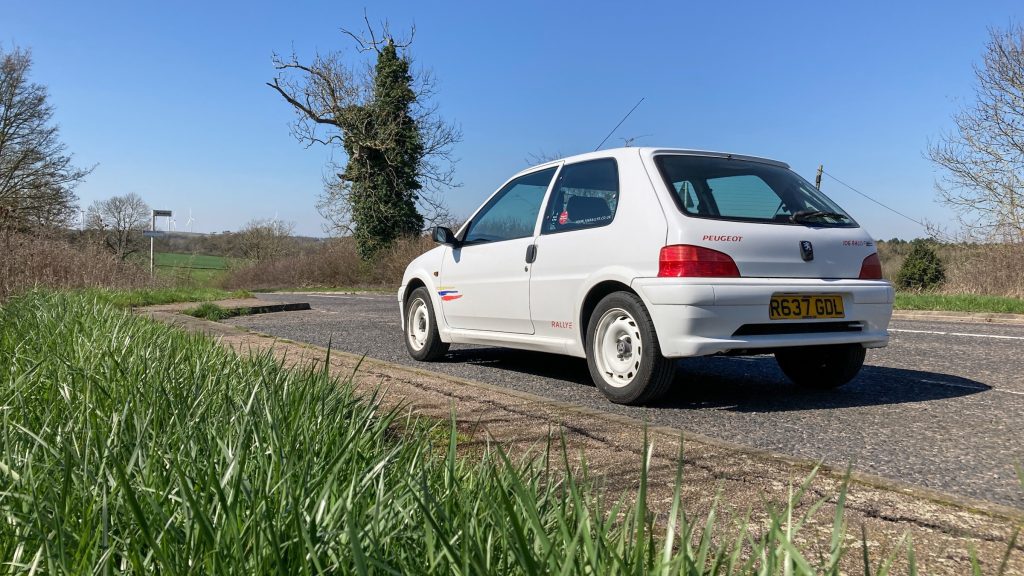
I don’t know what compelled me to pull over this time specifically, but I wasn’t necessarily expecting petrol to be glugging out of the injector rail when I opened the bonnet.
It’s become a recurring feature that when I awake the Rallye after a few months in storage – swapping it over with my RX-7, since I don’t have space for both at home – it’ll idle unusually high for the first journey or two, and smell just a little fuelly on the first trip home.
In retrospect this is probably the kind of thing one should pay attention to. Smelling actual petrol, rather than just the scent of an engine running a bit rich, probably means it’s emerging from somewhere it shouldn’t be, but since it’s always gone away quickly, I’d filed it mentally under “areas of little concern”.
Likewise the high idle only happens for a journey or two. Neither problem reared its head over my 2400-mile trip through France this time last year, for instance, which you’d think would tease out any recurring problems.
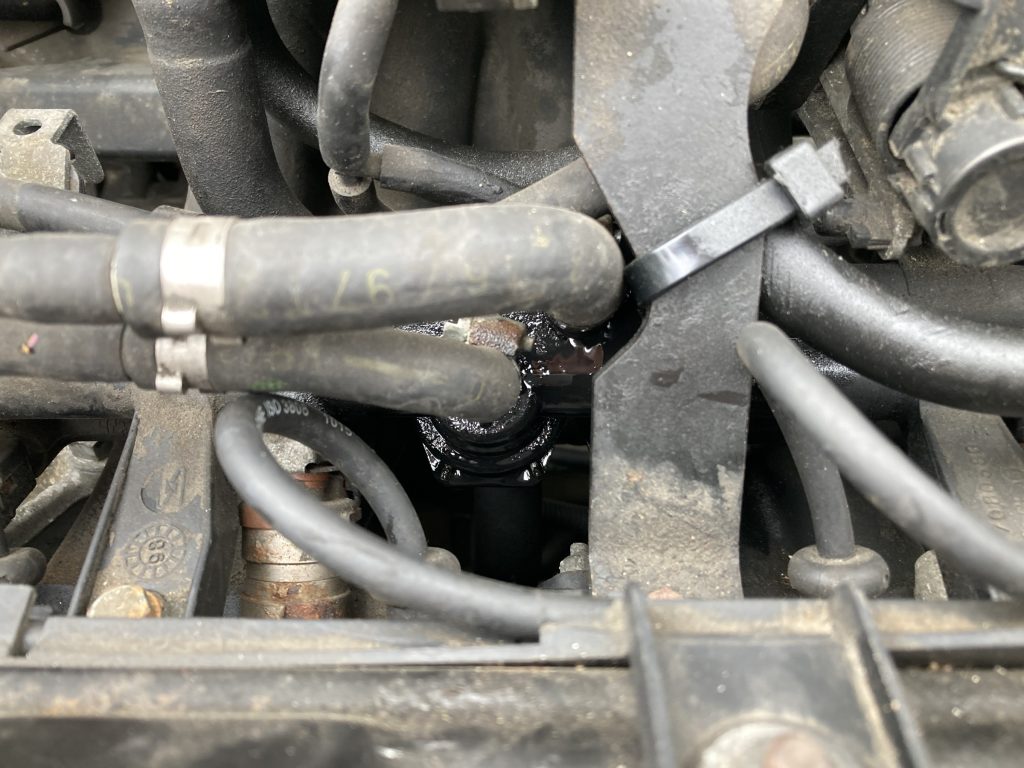
But as I drove away from the storage place, engine rising to maybe 2200rpm whenever I dipped the clutch, and letting the car basically accelerate slightly unaided when in gear, I figured it was worth stopping and having a look under the bonnet, just in case the throttle cable was sticking.
And as I watched liquid emerging at a fair old rate from a pair of pipes going into and out of the fuel rail, I soon forgot about the throttle cable. After that brief “errrrrrrr” moment of brainless inaction we humans get when presented with a new and unexpected challenge, I quickly flicked off the ignition and had a think about my next move.
While I had a small toolkit, I didn’t have any spare fuel hose, nor was anything notably loose on a quick wiggle, but with an AA membership in the back pocket I figured it was worth a try just in case they could do an on-the-spot fix.
People seem to have varied experiences of breakdown services, but I had no problems here – I actually reported my “breakdown” on the company’s app, which gave me regular updates on when the van would be along, and in all I waited probably only 40 minutes.
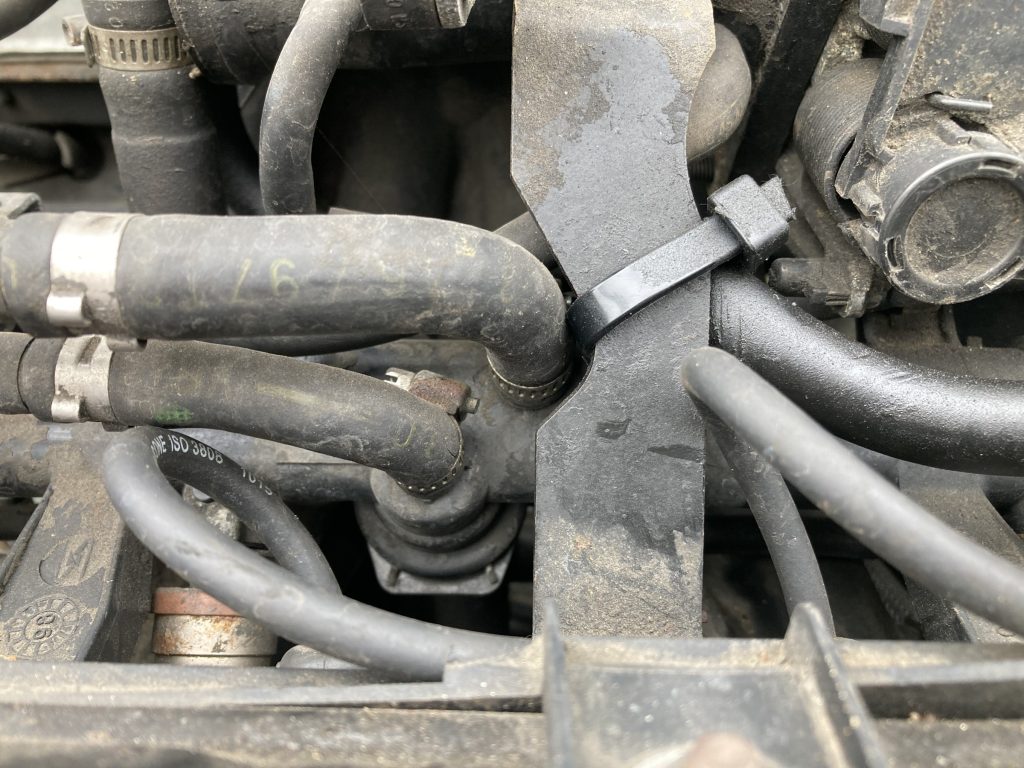
By then, of course, the leak had evaporated off, so I showed the patrolman the photo further up to confirm I wasn’t going mad. To try and replicate the problem, we restarted the car. Only this time, there wasn’t so much as a vague dampness around the fuel rail. Not a single seep, drip, or dribble. Not at idle, not with revs, and not after leaving the thing running for a few minutes.
The AA man’s only real conclusion was that since the car was still working and no issue was immediately apparent, I could probably just drive home, and keep an eye on it. At home I popped the bonnet, and it was still bone dry. And I’ve been out for two or three drives since – the first after again letting the car sit for a month – and there’s been no further issue.
Notably, the car hasn’t idled high since either, which does make me wonder if the two problems are connected – does it occasionally leak, and is fuel and air somehow seeping into somewhere it shouldn’t, encouraging the car to rev higher than it should until the leak disappears?
I’m slightly baffled, but a week from when this update goes live the car is booked into Peugeot specialists Pug1Off in Brackley for a proper look, so I should learn more then. In the meantime, you can forget your self-driving cars; my self-fixing Peugeot is a much better idea.
Tweet to @antonywrites Follow @antonywritesRead more
Dawn Patrol: Bedfordshire and Cambridgeshire
Opinion: Don’t let emotions ruin your next car-buying adventure
Our Classics: 1994 Mazda RX-7








